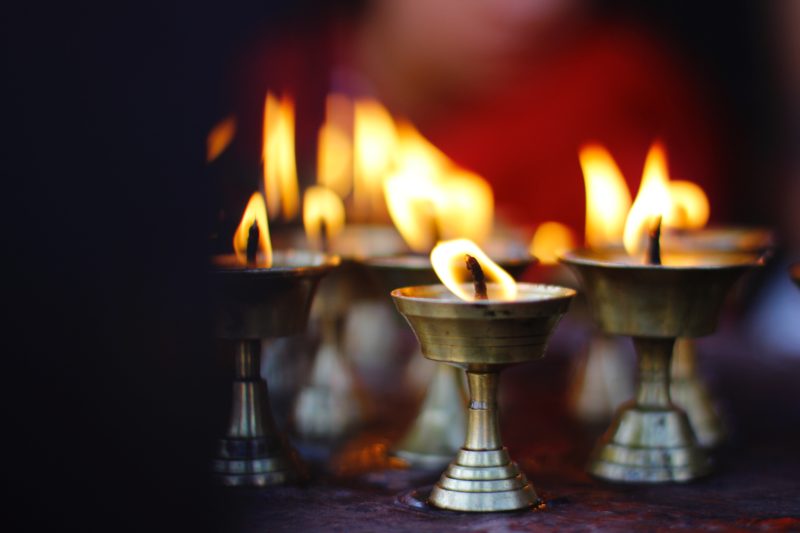The Disciple
The Disciple
By: Mahant Jay Jaggessur, July 13th, 2019 - Guru Purnima
Many people think of the Guru as a teacher. It is very important that we understand who the Guru is and what is the Guru’s relationship with his disciple. The teacher has students, while the Guru has disciples. The teacher can have anyone as his students, and likewise the student can choose anyone as his teacher and change teachers. It is not the same with the Guru and disciple. The Guru-disciple relationship is formed only when both are ready for each other. There is no consideration other that a spiritual connect between the Guru and the disciple for such a relationship to be established.
Satguru Kabir Saheb has very clearly described the relationship between the Guru and his disciple in the following saakhee:
“Guru To Aisaa Chaahiye, Sheeshya Se Kachhu Na Ley;
Sheeshya To Aisaa Chaahiye, Guru Ko Sab Kuchh Dey”
(see transliteration and pronunciation guide here)
Both the Guru and the disciple have only things to offer to each other. The Guru is he who is ready to offer all the spiritual knowledge to his disciple, and the disciple is ready to surrender himself completely to his Guru. In surrendering himself to his Guru, he is in fact entrusting his Self to the Guru. All his bad qualities will thus be removed, and he will be filled with spiritual knowledge which will enlighten him. This relationship in fact is a bond established between the two for life. The value of the knowledge imparted by the Guru is immeasurable. It is not the knowledge which the disciple can obtain from anywhere else, be it books, scriptures, teachers, etc. No amount of wealth can buy this spiritual knowledge. The uniqueness in this relationship is also a connection which exists beyond physical presence. In other words, the disciple is still connected with his Guru although he is not physically present with him. This can be likened to the accessing information with a Wi-Fi connection. For this reason, the value of this relationship is immeasurable.
Satguru Kabir Saheb has said, in line with the mystical connection between the Guru and the disciple, that true and committed devotees are worthy of and deserve the invaluable knowledge which opens the door to self-realisation.
“Guru Samaan Daataa Nahin, Yaachak Sheesh Samaan;
Teen Lok Ke Sampradaa, So Guru Deenheen Daan.”
(see transliteration and pronunciation guide here)
There is no greater benefactor than the Guru nor is there any greater supplicant than the disciple. The wealth of knowledge that the Guru imparts to his disciple is more valuable than the worth of all three worlds. What else does a disciple need? The realization happens only when both the Guru and the disciple are truly committed to their respective causes. Satguru Kabir Saheb has tirelessly expounded the discipline of conducting oneself as per his status. Both the Guru and the disciple have to live according to their roles as they are responsible for their own actions.
“Kahataa Hoon Kahi Jaat Hoon, Detaa Hoon Helaa;
Guru Kee Karanee Guru Jaanee, Chelaa Kee Karanee Chelaa.”
(see transliteration and pronunciation guide here)
Following the instructions of the Guru and implementing his teachings is the duty of the disciple. This goes hand in hand with the concept of total surrender.
There once was a King who was getting old. He thought that it was time for him to seek some spiritual knowledge and start to plan for the end of his journey in the world. He asked his minister who he could go to for spiritual knowledge. The minister advised him of a Saint who lived in a cave not too far from the King’s palace. The king summoned his minister to bring the Saint to him. The minister went to bring the Saint, but the Saint after hearing about the King’s request, refused to go to the palace. Instead, he told the minister to have the King come to him. The minister went back and explained this to the King. After a few days of reflection, the King agreed to go see the Saint in his cave. Accompanied by his minister, the King went there. The minister first went in to announce the arrival of the King. The Saint who was meditating, asked for the King to come in. The access to his cave was only 4 feet high; so the King had to bend to be able to get in. As soon as he went in, the Saint offered the King and the minister fruits and sweets, and welcomed them very gracefully. The King was very pleased with the welcome, but was still perplexed why the Saint refused to me to the palace where the King would have welcomed him with pomp. The Saint explained to him that he had to have him pass his test so he can accept him to be his disciple first. By having him come to his cave, he had to bow down to enter, which is a way to forsake his ego. Now that he did that, the Saint agreed to go to him as from the next day to start teaching him.
This story triggers us to understand our duty to surrender ourselves to our Guru. When we hesitate or have doubts, or still refuse to do so because we do not trust that relationship, then we are not different from a nigura (someone without a Guru). If we want to be a true disciple, we must fulfill our duty by unconditionally surrendering ourselves to our Guru.
Featured image by Mesh

